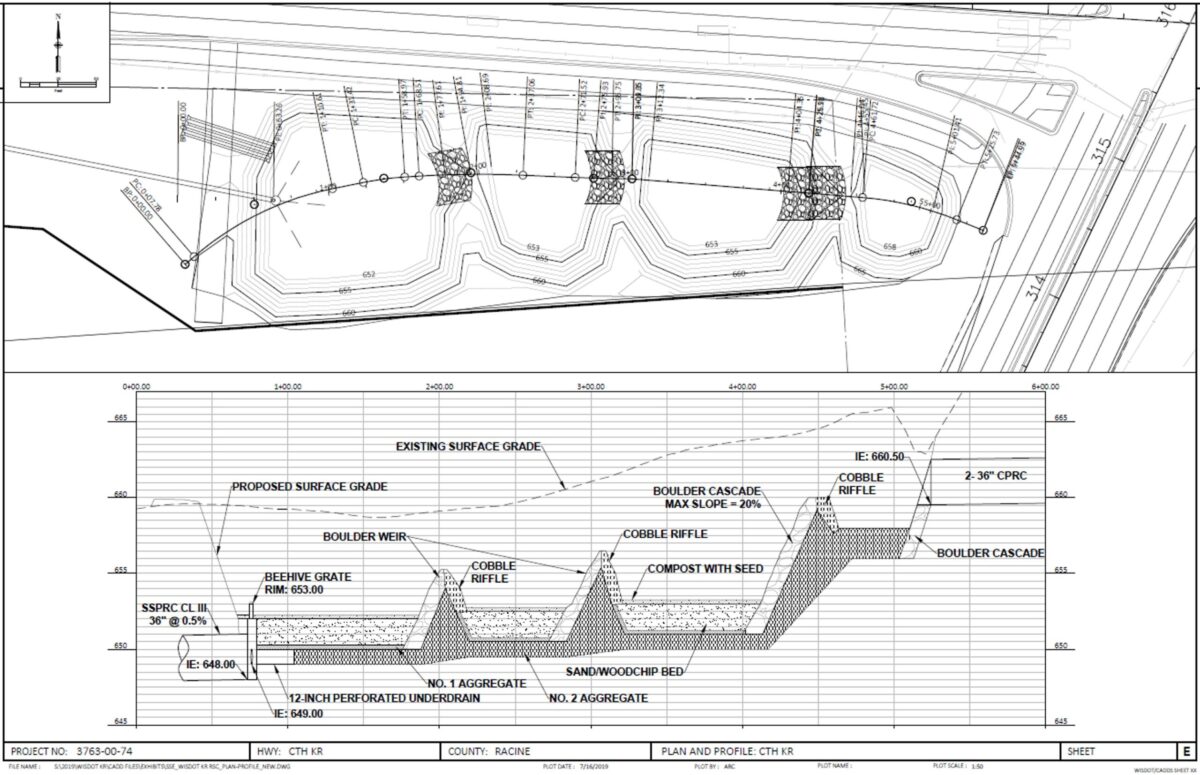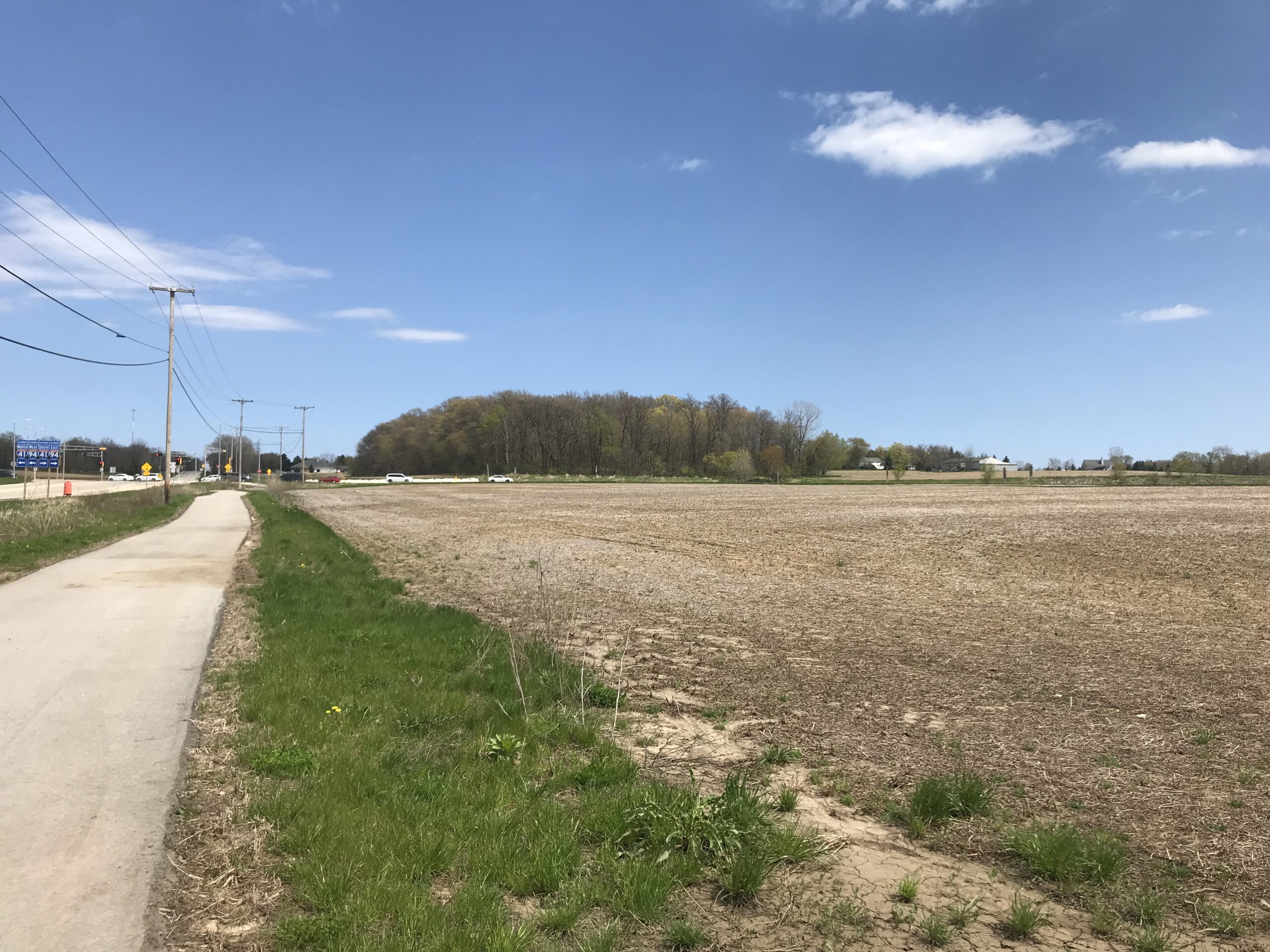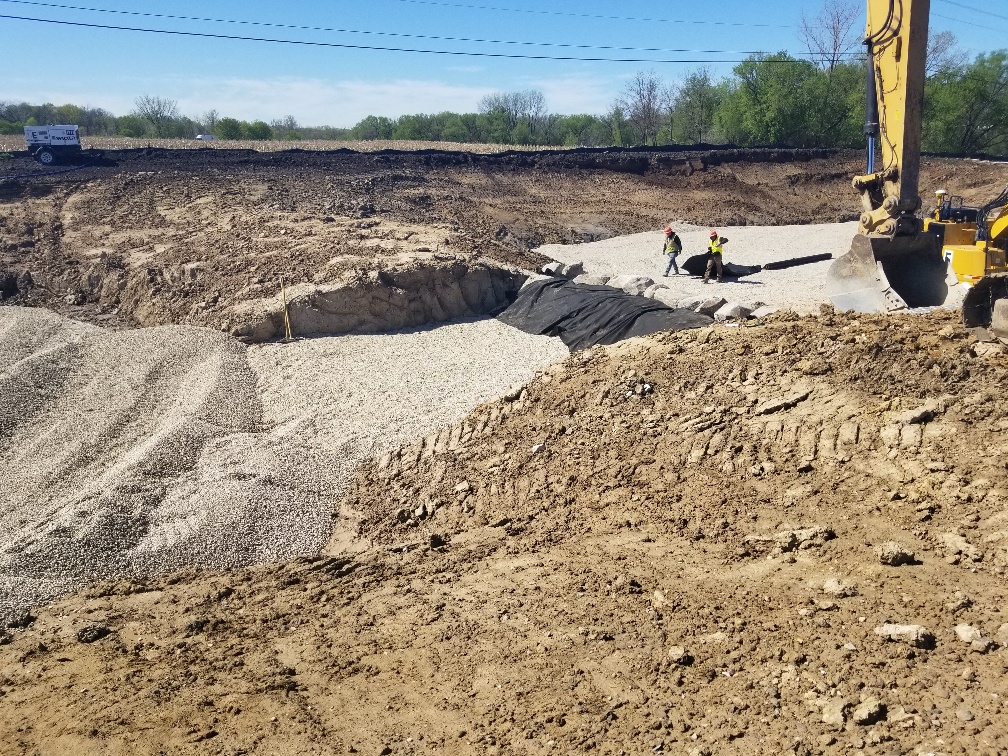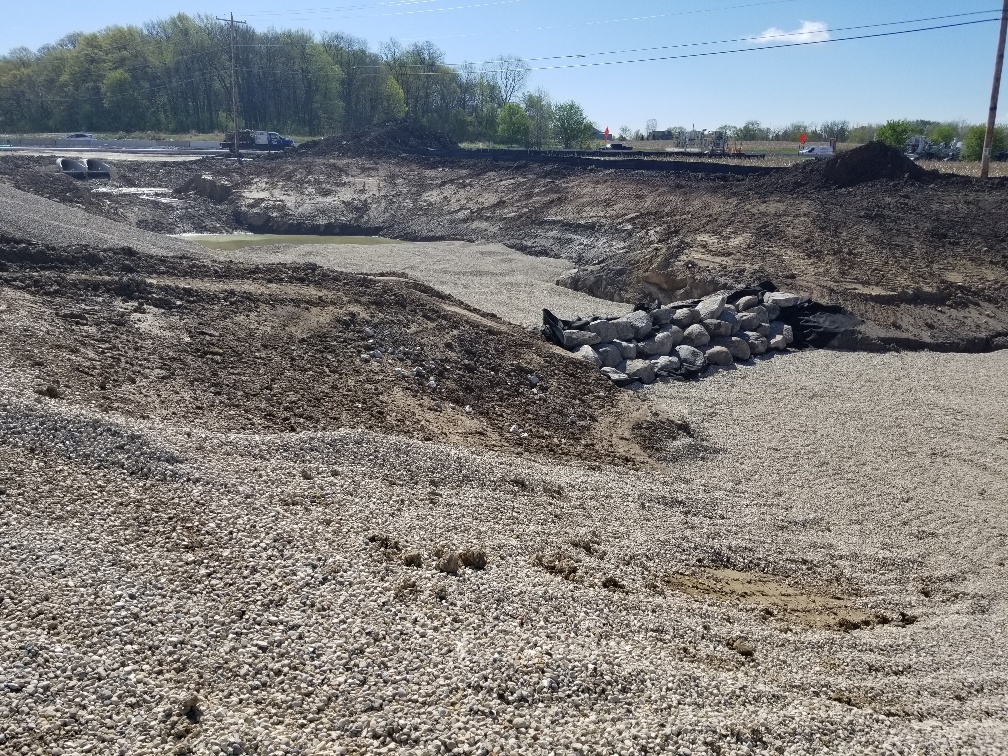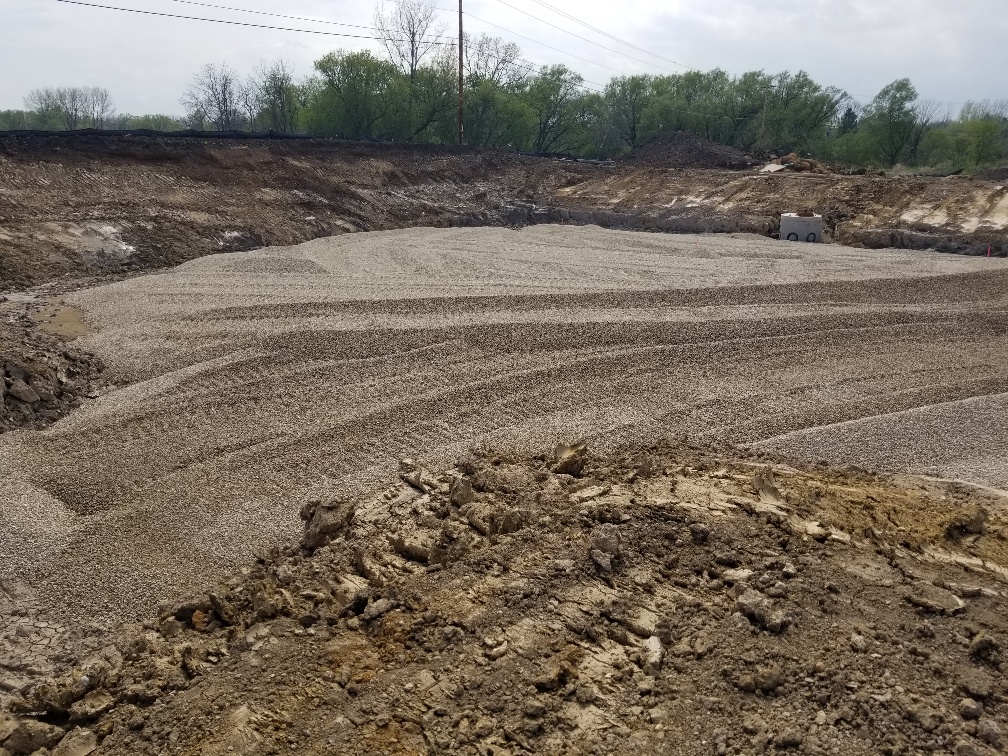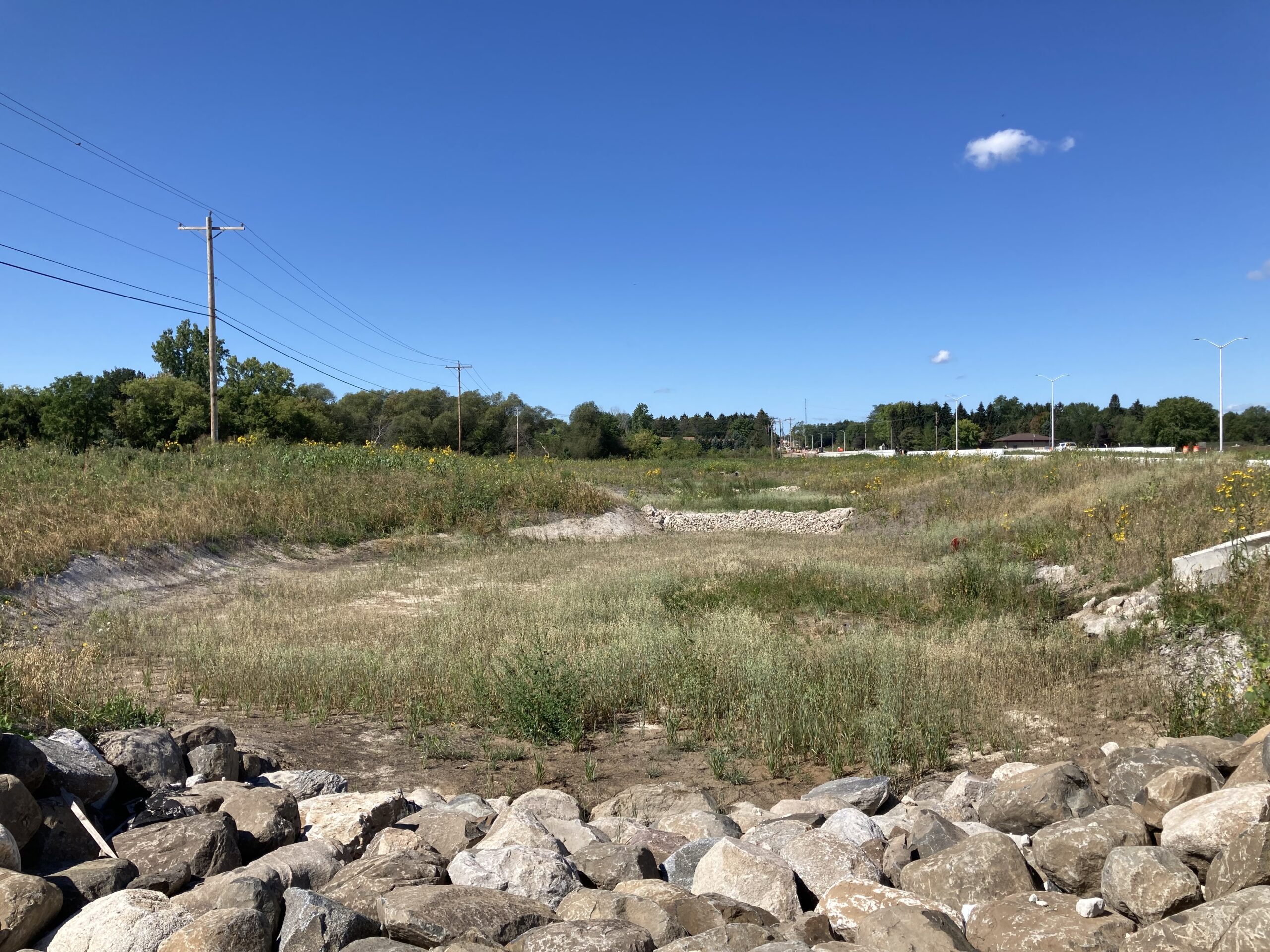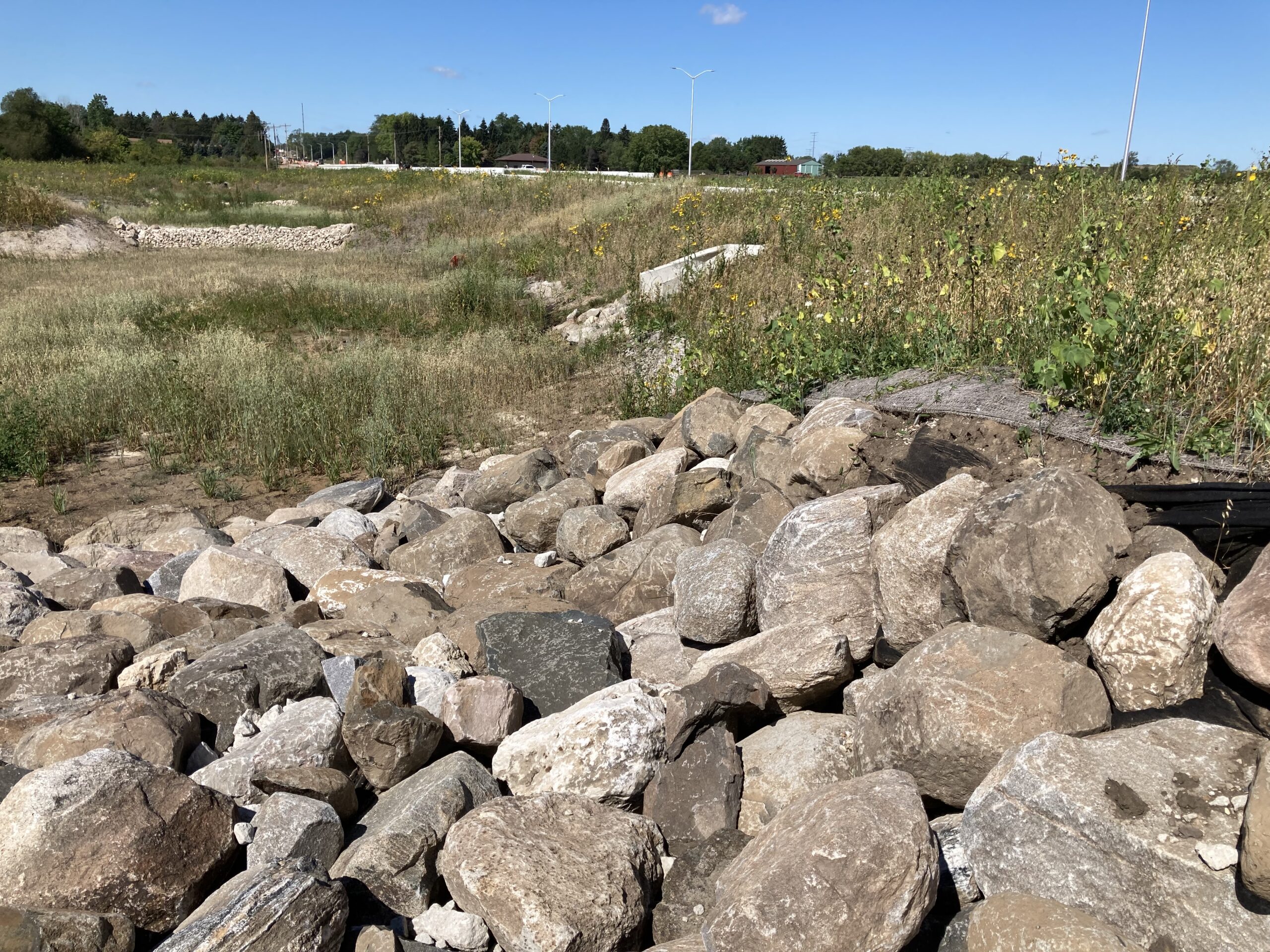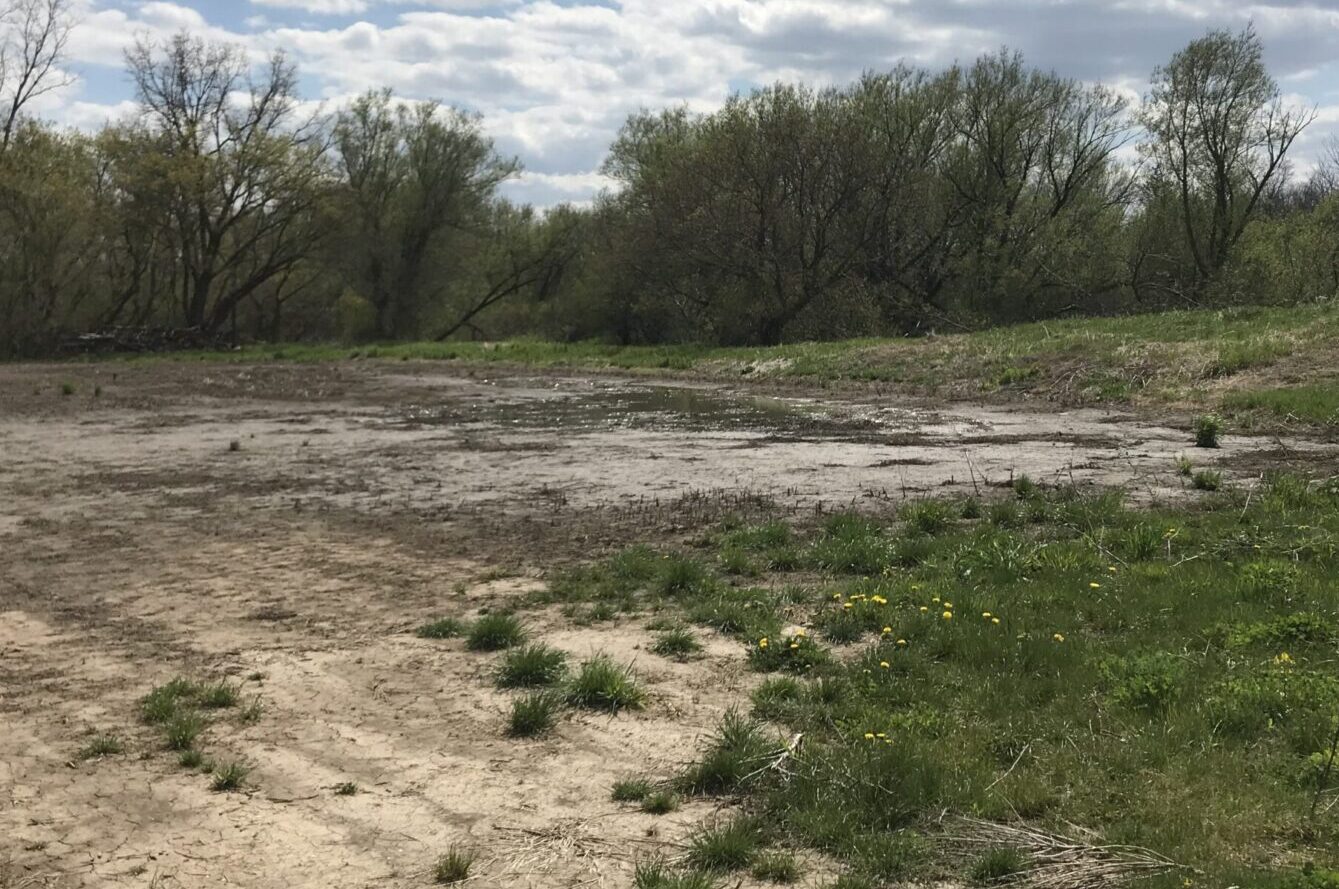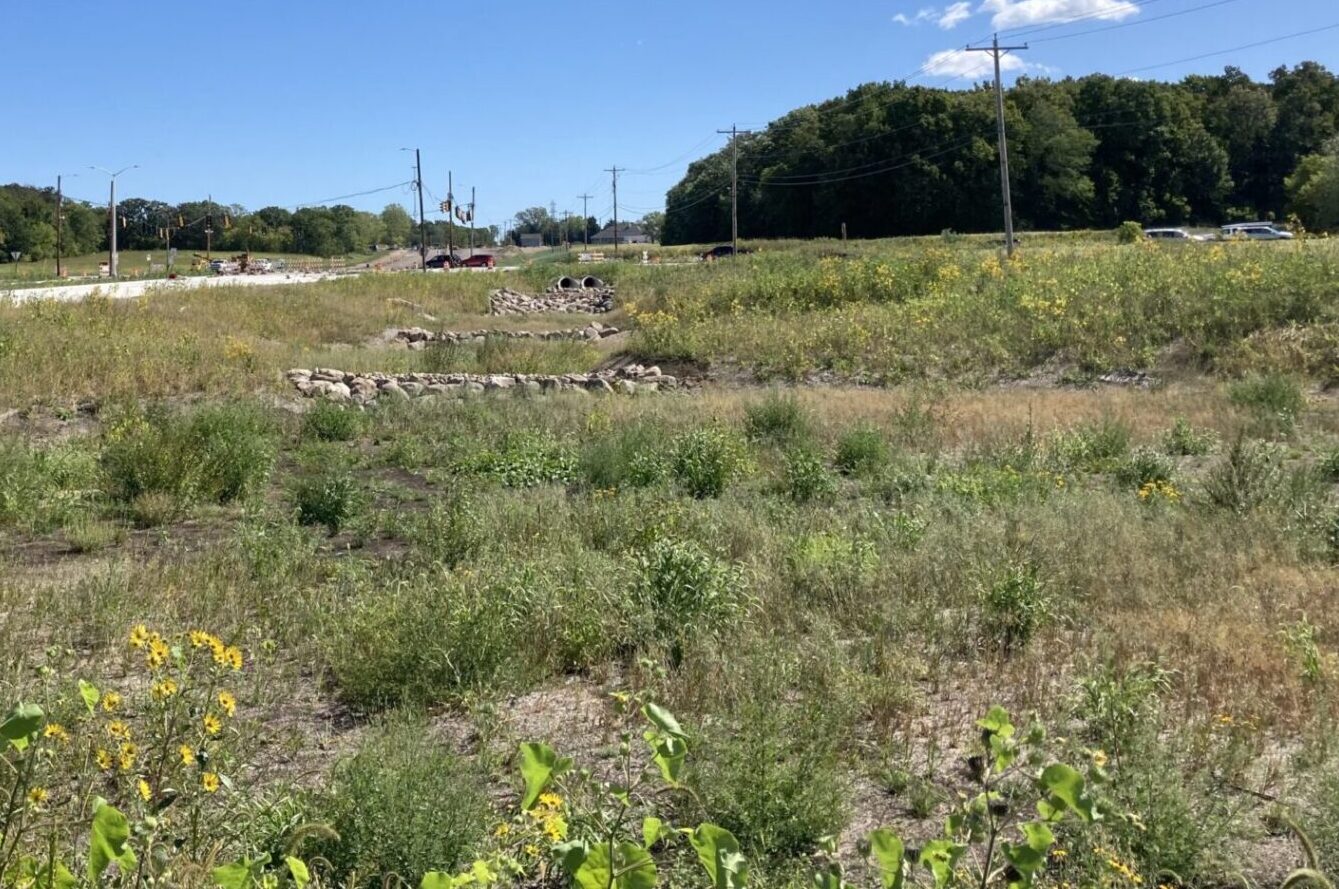Kenosha, Wis. Highway KR Regenerative Stormwater Conveyance
Root-Pike WIN | Kenosha County | WisDOT | WISDNR
Kenosha County, Wis. |
Municipalities |
Sustainable Water Engineering
Overview:
The Root-Pike Watershed Initiative Network (RPWIN), Kenosha County, Wisconsin Department of Natural Resources (WDNR) and Wisconsin Department of Transportation (WisDOT) worked with AQUALIS (formerly SSE) to design and implement an innovative solution for stormwater control along Highway KR.
Problem:
County Highway KR in Wisconsin was developed adjacent to the Pike River, over time it was decided Highway KR needed to be expanded to accommodate the future traffic loads. Wisconsin Department of Transportation (WisDOT) prepared to expand County Highway KR to include additional lanes and a recreational pathway. Due to the increased impervious pavement, additional stormwater infrastructure had to be installed.
Originally, a stormwater detention pond was proposed for the county owned parcel adjacent to the Pike River. Stakeholder groups including Kenosha County, Root-Pike Watershed Initiative Network (RPWIN), Wisconsin Department of Natural Resources (WDNR) and WisDOT came together to find an alternative innovative solution that considered the ecology of the Pike River, potential recreational and development uses for the parcel, water quality improvements and overall economics to manage the additional runoff.
RPWIN tasked AQUALIS with designing, engineering and implementing the stormwater control measure on the property. RPWIN’s mission has been to restore, protect and sustain all the watersheds in the Root-Pike basin for over two decades. Working with the EPA, municipalities and local firms including AQUALIS’s Engineering Division (formerly SSE), RPWIN has been able to improve water quality, reduce runoff and pollutant loads, slow the velocity of water volume, restore natural habitats and improve outdoor recreational opportunities.
This project takes place in the Root-Pike basin, an area prone to stormwater pollution. Due to frequent high levels of nitrogen, phosphorus, chloride and suspended solids, finding a stormwater control measure that could significantly reduce pollutant loads was of the upmost importance to the stakeholders.
Due to the nature of the project having multiple stakeholders, the engineers had to design a solution that would meet everyone’s combined goals. Including designing an asset that would cost similar to conventional retention ponds, effectively manage stormwater quality including total suspended solids (TSS), maintain the value of the land and protect the Pike River and surrounding watershed from degradation.

Before

After
Solution:
After discussion with AQUALIS’s Engineering Division around potential alternatives to traditional stormwater ponds, the groups agreed Regenerative Stormwater Conveyance (RSC) would be the most ideal infrastructure for the project. RSC naturally reduces suspended solids, nitrogen and phosphorus 50% more than a typical stormwater detention pond. A pond would also be more likely to attract nuisance species like geese, which can produce half a pound of phosphorus per individual goose a year. RSC also creates a beneficial habitat for native birds, insects, pollinators and amphibians. RSC can also be designed to fit appropriately in constrained or awkward areas.
Regenerative stormwater conveyance is a series of step pools designed to convey, manage and treat stormwater runoff. RSC is an example of low impact development that mimics natural processes and the flow of water. Traditionally, stormwater has been conveyed through gray infrastructure including pipes, concrete dams, drainage channels and stormwater ponds. Gray infrastructure can be unavoidable at times, but green infrastructure is the more sustainable option. This green stormwater infrastructure was chosen as it fit the expected goals of the project, including cost effectiveness.
Before highway development began, the RSC was incorporated into an existing slight downward slope on the property to allow gravity to assist in the conveyance of stormwater downstream. Three consecutive cascading pools were dug slightly below each other with steps or riffles constructed with rocks and boulders to slow the runoff. Stormwater is slowed as the riffle is designed at a higher elevation than the natural volume of the pool. During serious rain events, the runoff must bypass the riffle before continuing downstream. The pools in RSC are designed in a way to allow the stormwater to be temporarily retained to allow pollutants, sediments and nutrients to settle. Additional inlets were installed to convey stormwater into the GSI from the impervious pavement.
The slowed stormwater is allowed to infiltrate the ground and return to the groundwater table. The series of pools were designed to be lined with various aggregate materials, wood chips, compost and sand. This permeable material was chosen as stormwater will naturally filter through the media and return to the groundwater. This cascading design dissipates energy that naturally occurs when runoff rushes downstream, reducing erosion and sedimentation.
RSC meets or exceeds the stormwater criteria set by Kenosha County and Wisconsin Department of Natural Resources. Traditional stormwater ponds reduce TSS by 40% while the RSC designed for the parcel reduces TSS by 60%. During the 100-year peak flow RSC and stormwater ponds provide the same amount of flood reduction.
Proper maintenance of RSC includes visually inspecting the asset and removing debris and floatables as necessary. The native vegetation must be managed according to design requirements, removing invasive species. Stones may need to be replaced if dislodged, which typically does not occur when proper installation practices are used during construction.
During construction of GSI and SCMs in general, it is crucial to have temporary SCMs installed in accordance with a SWPP. Failure to treat stormwater before it reaches the unfinished project can destroy the asset from functioning properly as sediment and pollutants infiltrate and clog the pervious material. Additionally, the type of equipment used during construction is crucial as heavy machinery can compact the soils and prevent the SCM from functioning as a permeable surface.
Once designed, over an acre and a half of land was left undeveloped to provide value for future recreational developmental uses. The project cost was similar to that of a retention or detention pond installation. RSC allowed the project to be more cost effective as the design was sculpted into the existing landscape rather than excavated and graded as would be necessary for a pond. The project was able to utilize native plants and grasses to offer additional water quality and ecological benefits.
This instance of Regenerative Stormwater Conveyance was the first in any WisDOT project, which sets an exciting precedent for future sustainable projects. With this project, AQUALIS’s engineering division proved that green stormwater infrastructure can be less expensive, require less surface area and be simple to maintain when compared to traditional gray infrastructure.
 Kenosha, Wis. Highway KR Regenerative Stormwater ConveyanceThe Root-Pike Watershed Initiative Network Kenosha County, and others worked with AQUALIS to design and implement an innovative solution for stormwater control along Highway KR.
Kenosha, Wis. Highway KR Regenerative Stormwater ConveyanceThe Root-Pike Watershed Initiative Network Kenosha County, and others worked with AQUALIS to design and implement an innovative solution for stormwater control along Highway KR.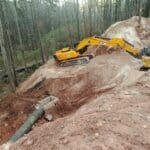 Durham, N.C. Sinkhole Leads to Stormwater System RehabilitationThe tenant on this property noticed a depression that opened to the ground below and notified the property owners.
Durham, N.C. Sinkhole Leads to Stormwater System RehabilitationThe tenant on this property noticed a depression that opened to the ground below and notified the property owners.

